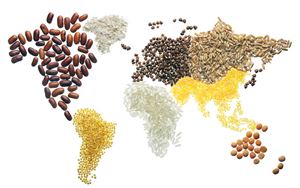In
1861, when Italy was united, there were 56 provinces. Over the years, their
number has nearly doubled to 107, including those in regions with special
status. Now, in its drive to cut spending, the lower house of Italy’s
technocratic government approved a controversial decree on October 31, 2012,
that would more than half the number of Italian provinces and create 10
‘metropolitan cities’ as of 2014. The decree, however, has been met with
opposition throughout the country as the cities of the soon-to-be former
provinces battle to become provincial capitals. This is especially true in
Tuscany, where ancient rivals Livorno and Pisa are fiercely at odds, just like
the Guelphs and Ghibellines of yore.
‘From
the current 86 provinces [107 if those with special statutes are included],
there will be 51,’ said Italy’s minister of public administration, Filippo
Patroni Griffi, at a press conference introducing the decree. ‘There will be
several completely new provinces in terms of their boundaries and functions,’
he added.
The
legislation is a product of the spending review launched by technocrat prime
minister Mario Monti earlier this year and is motivated by a drive to cut
spending at all levels of government: national, regional, provincial and
municipal. Officials have not yet given an estimate of the expected savings
from the reduction.
The
new provincial boundary lines were created based on the following criteria:
each new province must extend over a territory that is a minimum of 2,500
square kilometres and must have at least 350,000 residents.
The
provinces in regions with special status-Sicily, Trentino Alto-Adige, Valle
d’Aosta, Fruili Venezia Giulia and Sardinia-are not included in the decree.
Sardinia has already reduced its provinces from eight to four following a
recent referendum (the new provinces are Cagliari, Sassari, Nuoro and Oristano)
and officials say it will seek to merge provinces in the other ‘special status’
regions within the next six months.
As
of January 1, 2013, provincial governments will be reduced to one president and
a maximum of three councillors, and the new metropolitan cities will be
instituted. Provincial elections will be held in November 2013, and by 2014 the
decree will take full effect. All provincial offices will be located in the new
provincial capitals.
What do the provinces do?
Italy’s
provinces have several functions, including local planning and zoning in the
provincial area and the protection of areas following calamity; scholastic
management and maintenance of some 5,000 school buildings across the country;
operation of provincial training and job centres (‘centri d’impiego’);
enforcement of hunting and fishing regulations and license issueing; protection
of flora and fauna in nature reserves and parks; promotion of artistic and
cultural heritage; protection of waterways and energy resources; promotion of local
business sectors; and the management of provincial roads, highways, and
transportation regulation (motor vehicle registrations, road maintenance,
driver’s licensing and so forth).
Tuscany’s new provinces
In
the decree, the Tuscan region will see the number of its provinces reduced from
10 to 3, plus the creation of a new administrative body, the metropolitan city
of Florence-Prato-Pistoia (FI-PO-PT).
According
to the legislation, when two or more provinces are united, the abolished
provincial city with the largest number of inhabitants will be the new
provincial capital. Tuscany’s new provinces are the autonomous province of
Arezzo; Siena will merge with Grosseto, the latter of which will likely become
the provincial capital; and the union of Massa-Carrara, Lucca, Pisa and
Livorno, the latter of which boasts the largest population, though the mayor of
Pisa, Marco Fillippeschi, is lobbying for an exception.
Determining
the new provincial capitals is one of the most heated issues in Tuscany. Pisa
does not want to fall under the management of Livorno. Prato says it will
‘never be governed’ by Florence (mayor of Prato, Roberto Cenni, made headlines
for giving an interview on the issue while sitting in a toilet). Siena has
expressed disappointment about being under Grosseto. The only area that seems
happy about the decree is Arezzo, which remains autonomous, and Grosseto, which
will govern one of the largest provinces, geographically, in Italy.
The
governing body for the metropolitan city of FI-PO-PT will be composed of the
mayor of Florence, the provincial capital, and 10 to 16 councillors (based on
population) who are mayors or councillors of the municipalities located in its
jurisdiction. The FI-PO-PT metropolitan city will count 1,540,934 inhabitants,
extend over an area of 4,843 square kilometres. It also wields economic clout,
representing an estimated 70 percent of the region’s gross domestic product,
but also 60 percent of the region’s unemployed.
Old rivalries reawaken
Ancient
rivalries still run deep in Tuscany. Seeking to protect cultural and
territorial identity, the cities of Livorno and Pisa are at odds, each seeking
to be the provincial capital. Technically, the role should be Livorno’s because
it is the largest in the new area and thus meets the criteria, but it is
rumoured that a legal loophole in the decree may allow Pisa to become the
provincial capital.
Enrico
Rossi, president of the Tuscan Region, says he is happy with the new division,
which was similar to his initial proposal of instituting three ‘vast areas’
(see TF 169). He is, however, along with the mayors of Prato and Florence, and
others, worried about the administrative powers that will be devolved to the
metropolitan city, which would be much bigger, both in size and population, than
Tuscany’s other merged provinces.
The
Union of Provinces (www.upi.it) also opposes
the decree, calling it an ‘attack on democracy,’ and has organized a protest
for November 8 in Rome. A number of political figures have already threatened
to launch constitutional challenges against the decree.
More spending cuts
Next
on the national government’s list is a consolidation of Prefect offices and a
reduction in the number of regional administration offices run by the State,
including those belonging to the national tax agency, the education ministry,
police forces and the forestry corps. In Tuscany, these offices (10 Prefect
offices, 10 provincial offices of the Carabinieri police, and 10 Questura
offices in each province run by the internal police that controls passports)
and those of the provinces to be merged employ an estimated 45,000 people and
the new measure will put these jobs at risk.
On
October 31, 2012, the cabinet also approved a separate package of measures aimed
at reducing waste and inefficiency at the regional level, which is expected to
cut costs by 40 million euro a year.







